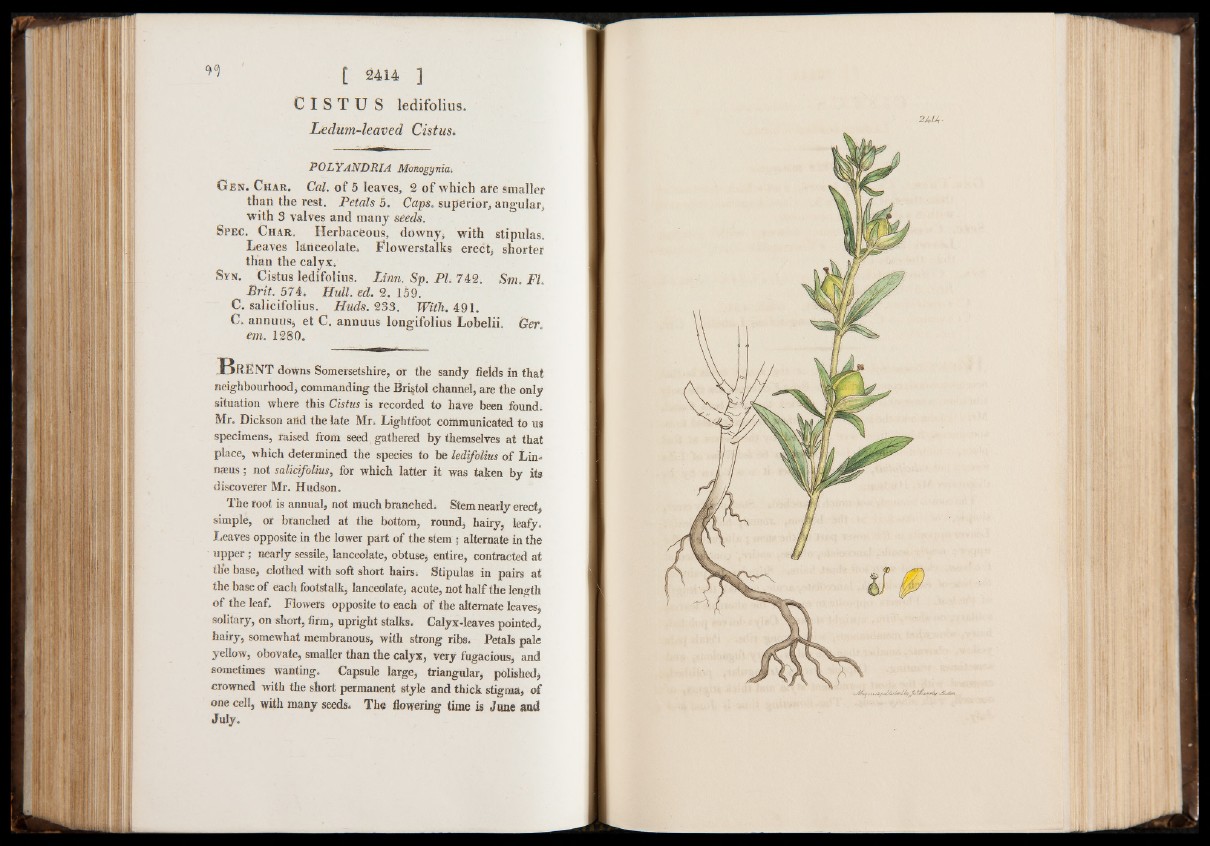
” t 24U ]
C I S T U S ledifolius.
Ledum-leaved Cist us*
POLYANDRIA Monogynia.
G en. Char. Cal. of 5 leaves, 2 of which are smaller
than the rest. Petals 5. Caps, superior, angular,
with 3 valves and many seeds.
Spec. Char. Herbaceous, downy, with stipulas.
Leaves lanceolate. Flowerstalks erect, shorter
than the calyx.
Svn. Cistus ledifolius. Linn. Sp. PL 742. Sm. FI
Brit. 574. Hull. ed. 2. 159.
C. salicifolius. Huds. 233. With. 491.
C. annuus, et C. annuus longifolius Lobelii. Ger.
em. 1280.
B r e n t downs Somersetshire, or the sandy fields in that
neighbourhood, commanding the Bristol channel, are the only
situation where this Cistus is recorded to have been found.
Mr. Dickson arid the late Mr. Lightfoot coirimunicated to us
specimens, raised from seed gathered by themselves at that
place, which determined the species to be ledifolius of Lin-
nrnus; not salicifolius, for which latter it was taken by its
discoverer Mr. Hudson.
The root is annual, not much branched. Stem nearly erect,
simple, or branched at the bottom, round, hairy, leafy.
Leaves opposite in the lower part of the stem ; alternate in the
upper; nearly sessile, lanceolate, obtuse, entire, contracted at
the base, clothed with soft short hairs. Stipulas in pairs at
the base of each footstalk, lanceolate, acute, riot half the length
of the leaf. Flowers opposite to each of the alternate leaves,
solitary, on short, firm, upright stalks. Calyx-leaves pointed,
hairy, somewhat membranous, with strong ribs. Petals pale
yellow, obovate, smaller than the calyx, very fugacious, and
sometimes wanting. Capsule large, triangular, polished,
crowned with the short permanent style and thick stigma, of
one cell, with many seeds. The flowering time is June and
July.